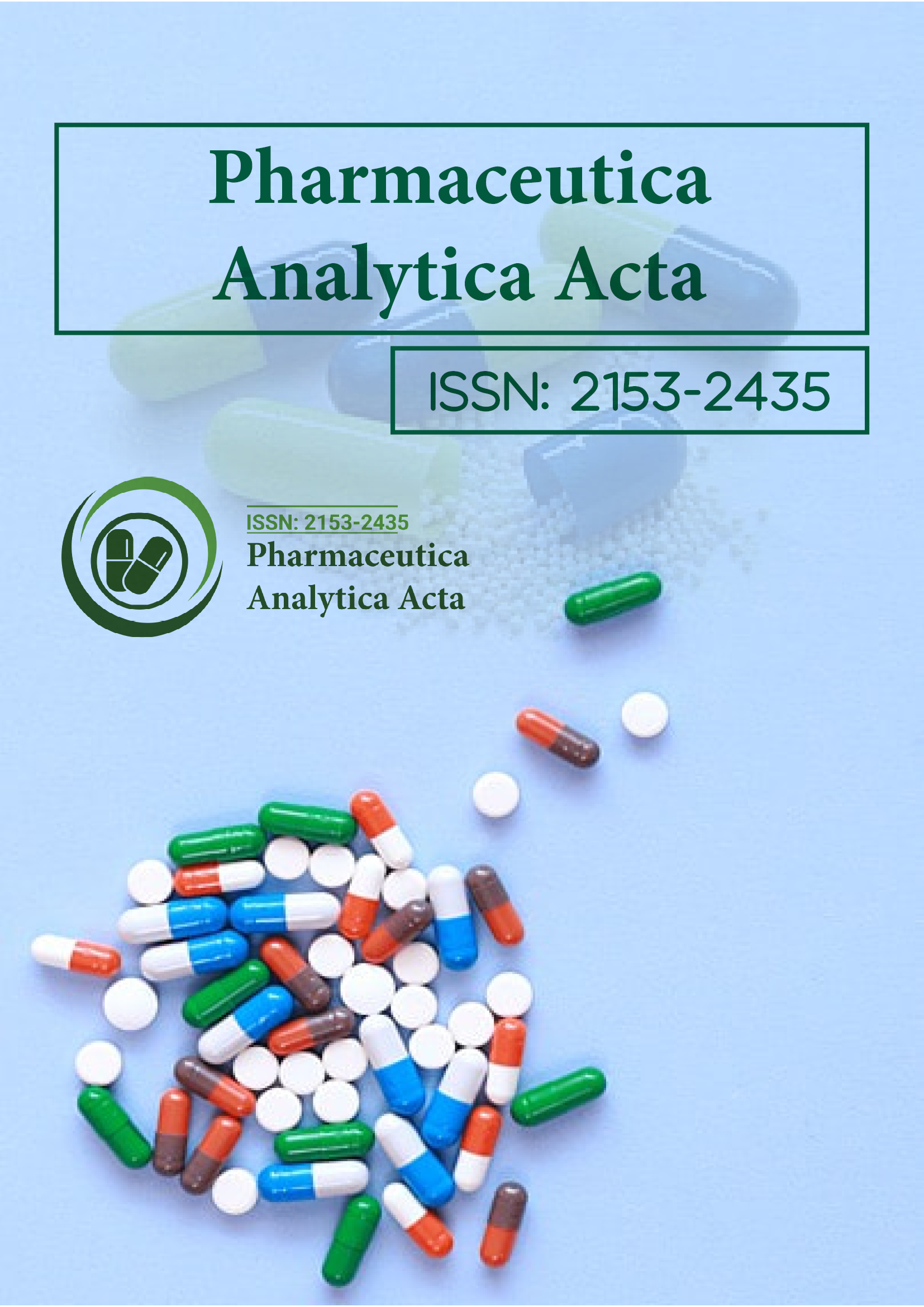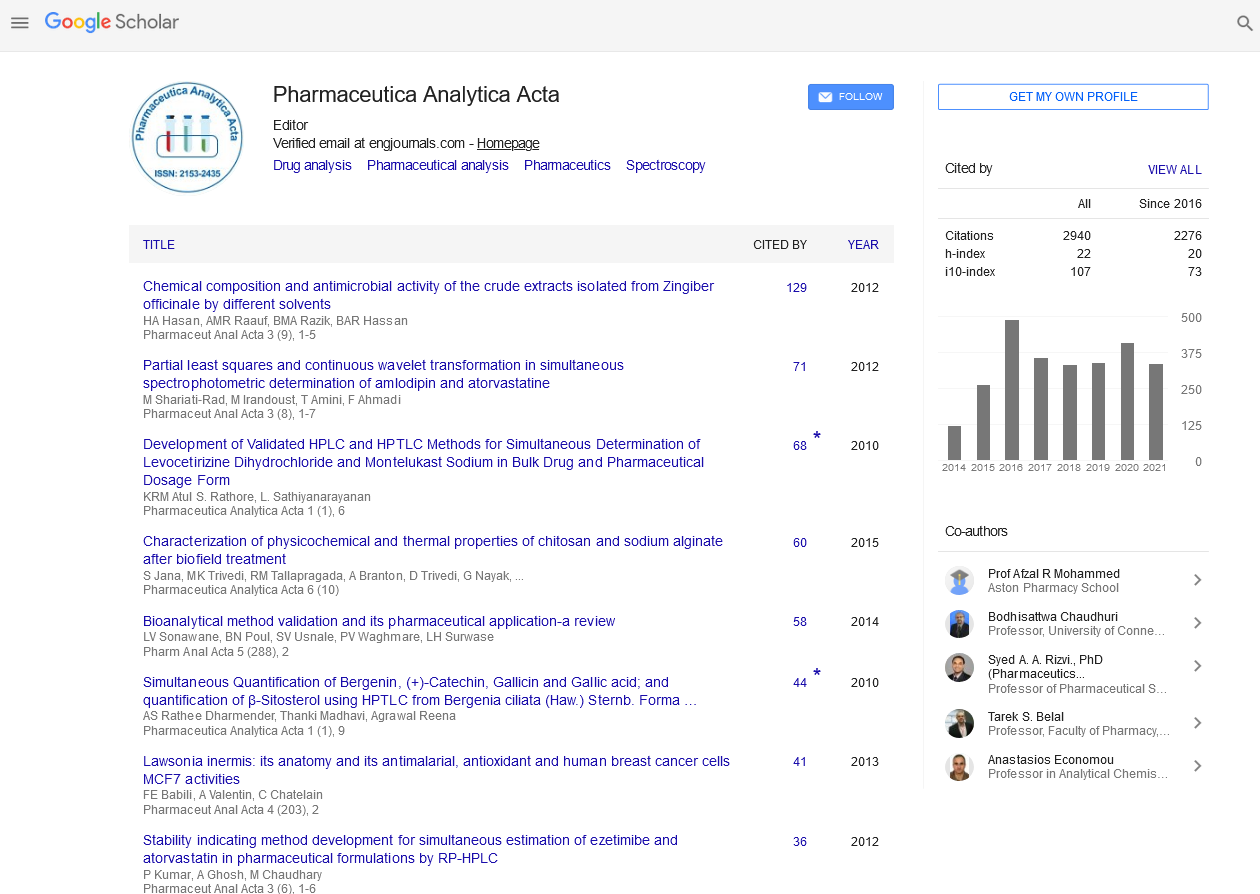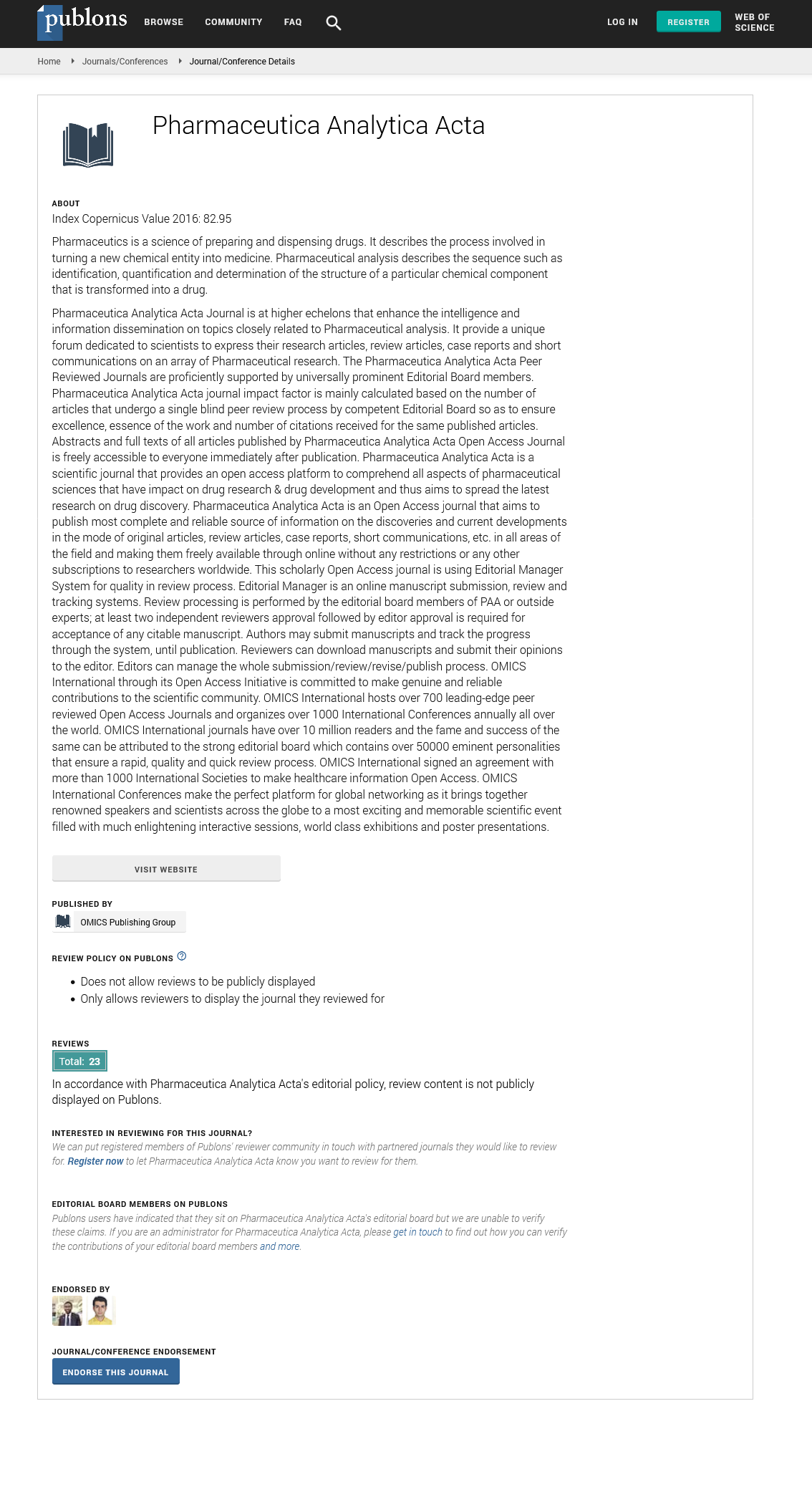Indexed In
- Open J Gate
- Genamics JournalSeek
- Academic Keys
- JournalTOCs
- The Global Impact Factor (GIF)
- China National Knowledge Infrastructure (CNKI)
- Ulrich's Periodicals Directory
- RefSeek
- Hamdard University
- EBSCO A-Z
- OCLC- WorldCat
- Publons
- Geneva Foundation for Medical Education and Research
- Euro Pub
- Google Scholar
Useful Links
Share This Page
Journal Flyer

Open Access Journals
- Agri and Aquaculture
- Biochemistry
- Bioinformatics & Systems Biology
- Business & Management
- Chemistry
- Clinical Sciences
- Engineering
- Food & Nutrition
- General Science
- Genetics & Molecular Biology
- Immunology & Microbiology
- Medical Sciences
- Neuroscience & Psychology
- Nursing & Health Care
- Pharmaceutical Sciences
Commentary - (2023) Volume 14, Issue 6
Counting Methods for Airborne Contaminants Detection in Pharmaceutical: Ensuring Purity and Safety in Drug Manufacturing
Marlene Raschiatore*Received: 13-Nov-2023, Manuscript No. PAA-23-24918; Editor assigned: 16-Nov-2023, Pre QC No. PAA-23-24918 (PQ); Reviewed: 30-Nov-2023, QC No. PAA-23-24918; Revised: 07-Dec-2023, Manuscript No. PAA-23-24918 (R); Published: 14-Dec-2023, DOI: 10.35248/2153-2435.23.14.766
Description
In the pharmaceutical industry, maintaining clean and controlled environments is important to ensuring the safety, efficacy, and quality of drug products. Airborne contaminants, such as particles, microorganisms, and volatile compounds, pose significant risks to pharmaceutical manufacturing processes, research laboratories, and healthcare facilities. Particle counting methods play an important role in detecting and monitoring airborne contaminants, thereby safeguarding pharmaceutical products and protecting public health.
Particle counting methods involve the measurement and characterization of airborne particles present in pharmaceutical environments. These methods utilize specialized instruments, such as particle counters, to quantify the concentration, size distribution, and morphology of particles suspended in the air. Various techniques, including optical microscopy, light separating, and laser-based particle counting, are employed to detect and analyze airborne contaminants with high sensitivity and precision.
In pharmaceutical settings, particle counting methods are used to assess air quality in cleanrooms, controlled environments, and critical manufacturing areas where drug products are prepared, processed, and packaged. By monitoring airborne particle levels, pharmaceutical companies can identify potential sources of contamination, implement corrective actions, and maintain compliance with regulatory standards, such as Good Manufacturing Practice (GMP) guidelines.
Particle counting methods find applications across diverse areas of pharmaceutical manufacturing, quality control, and research. In cleanroom environments, particle counting is performed routinely to evaluate the effectiveness of air filtration systems, monitor airborne contamination levels, and verify compliance with cleanliness standards, such as ISO 14644 and USP <797> requirements for sterile compounding.
Moreover, particle counting plays an important role in aseptic processing operations, where the presence of airborne particles can compromise the sterility of drug products. By conducting particle monitoring during critical manufacturing processes, such as filling, sealing, and packaging, pharmaceutical manufacturers can mitigate the risk of product contamination and ensure the integrity of sterile pharmaceutical preparations.
Particle counting methods are also utilized in pharmaceutical research laboratories to assess the impact of environmental factors, such as air quality, temperature, and humidity, on drug stability, formulation performance, and analytical results. By controlling airborne particle levels in laboratory settings, researchers can minimize experimental variability, ensure data accuracy, and maintain reproducibility in scientific studies.
Despite the importance of particle counting methods in pharmaceuticals, several challenges exist in their implementation and interpretation. One challenge is the variability in particle counting instrumentation and calibration standards, which can lead to discrepancies in measurement results between different instruments and laboratories. Standardization efforts, such as ISO 21501 for particle counters, aim to address these issues and promote consistency in particle counting practices.
Another challenge is the interpretation of particle counting data, particularly in complex pharmaceutical environments with multiple sources of particle generation. Distinguishing between viable and non-viable particles, assessing particle size distributions, and determining the significance of particle excursions require careful analysis and interpretation by qualified personnel with expertise in particle counting methodologies.
Particle counting methods are integral to regulatory compliance in the pharmaceutical industry, as they provide critical data for assessing the cleanliness and quality of manufacturing facilities and processes. Regulatory agencies, such as the FDA, EMA, and WHO, require pharmaceutical manufacturers to adhere to stringent cleanliness standards and guidelines to ensure the safety and efficacy of drug products.
By implementing robust particle counting programs and monitoring protocols, pharmaceutical companies can demonstrate compliance with regulatory requirements and industry best practices. Regular particle monitoring, documentation of monitoring data, and corrective actions in response to excursions are essential components of pharmaceutical quality assurance and control systems.
In conclusion, particle counting methods play a vital role in ensuring the purity, safety, and quality of pharmaceutical products by detecting and monitoring airborne contaminants in manufacturing environments. By employing advanced instrumentation and rigorous monitoring protocols, pharmaceutical companies can identify potential sources of contamination, implement preventive measures, and maintain compliance with regulatory standards.
As the pharmaceutical industry continues to evolve, the importance of particle counting methods in safeguarding drug manufacturing processes and protecting public health cannot be overstated. By investing in new particle counting technologies, training personnel in particle monitoring techniques, and fostering a culture of quality and compliance, pharmaceutical companies can uphold the highest standards of cleanliness and integrity in their operations.
Citation: Raschiatore M (2023) Counting Methods for Airborne Contaminants Detection in Pharmaceutical: Ensuring Purity and Safety in Drug Manufacturing. Pharm Anal Acta. 14:766.
Copyright: © 2023 Raschiatore M. This is an open-access article distributed under the terms of the Creative Commons Attribution License, which permits unrestricted use, distribution, and reproduction in any medium, provided the original author and source are credited.


